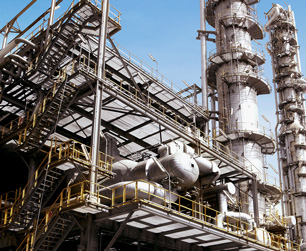DEHA [Di(2-ethylhexyl) adipate]
| EPA Maximum Contaminant Level (MCL) |
0.4 mg/L |

DEHA [Di(2-ethylhexyl) adipate] is an organic chemical used as a lubricant, for hydraulic fluids, and as a plasticizer in a number of products and industries. According to the EPA, it's used in many domestic products: “bath oils, eye shadow, cologne, foundations, rouge, blusher, nail polish remover, moisturizers and indoor tanning preparations.”
DEHA can end up in foods like cheeses through packaging that has been plasticized with it. It arrives in water generally as discharge from factories.
Health Effects of DEHA
DEHA is toxic, but not a known carcinogen. According to the EPA:
Some people who drink water containing di(2-ethylhexyl) adipate in excess of the maximum contaminant level [0.4 milligrams per Liter (mg/L)] over many years could experience toxic effects such as weight loss, liver enlargement, or possible reproductive difficulties.
Water Treatment for DEHA
The EPA recommends granular activated carbon (GAC) for the treatment of DEHA.
Sources: EPA, WHO, Photo: WikiMedia, author: Secl
Site Index
Filtration Systems
- Aeration for Iron & Sulfide
- Backwashing Filters
(whole house & well units)
- Chlorine & Chemical Injectors
- Countertop Water Filters
- Garden Hose Filters
- Reverse Osmosis, Residential
- Reverse Osmosis, Commercial
- Shower Filters
- Specialty Filters
- Ultraviolet Systems
- Undersink Filters
- Water Softeners
- Whole House Filters
Cartridges
Parts
- Replacement Parts
- Faucets
- Filter Media
- Fittings
- Housings
- O-rings
- Pumps
- Pura UV
- R.O. Parts
- R.O. Tanks
- R.O. Booster Pump
- VIQUA UV